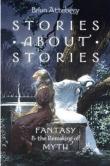'In Australia, where the oppression of native peoples and cultures was, if anything, even more severe than in North America, it has been harder to create contact zones, and, as discussed in chapter 5, attempts by white writers such as Patricia Wrightson to blend their traditions with those of indigenous Australians have been met with suspicion or hostility. Non-Aboriginal writers from Australia have generated such a collection of ignorant, patronizing, and demeaning texts about Aborigines that some of the latter want to call a halt to any further attempts. As the novelist Melissa Lucashenko says, "Who asked you to write about Aboriginal people? If it wasn't Aboriginal people themselves, I suggest you go away and look at your own lives instead of ours. We are tired of being the freak show of Australian popular culture" (quoted in Heiss 10). Whereas American writers often treated native cultures as noble, if doomed, and Indian characters as heroic adversaries or guides to the white hero (as in James Fenimore Cooper Leatherstocking series), early depictions of Aboriginal people at best treat them as part of the landscape and at worst—and there is a pretty clear worst in Austyn Granville lost-world romance The Fallen Race (1892)—as subhuman.' (Introduction)



